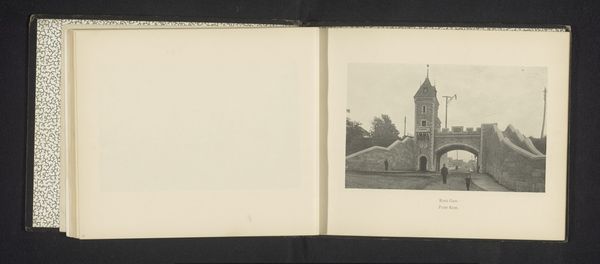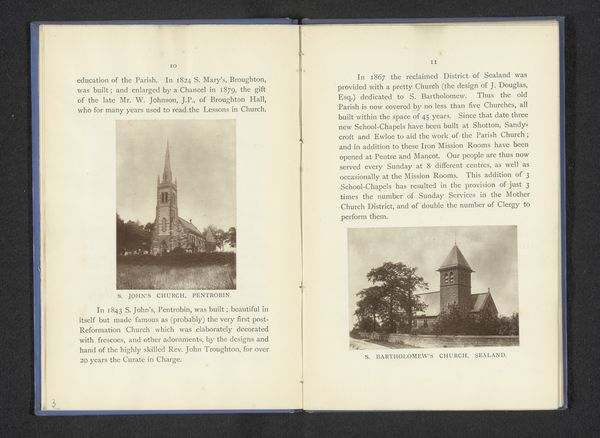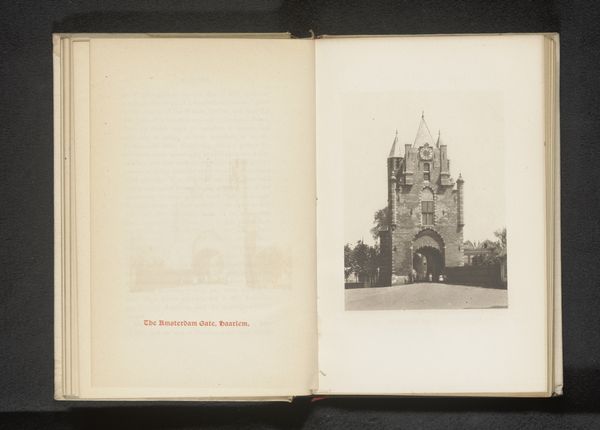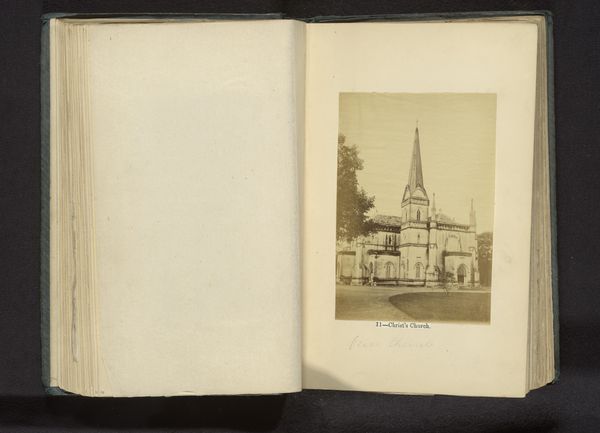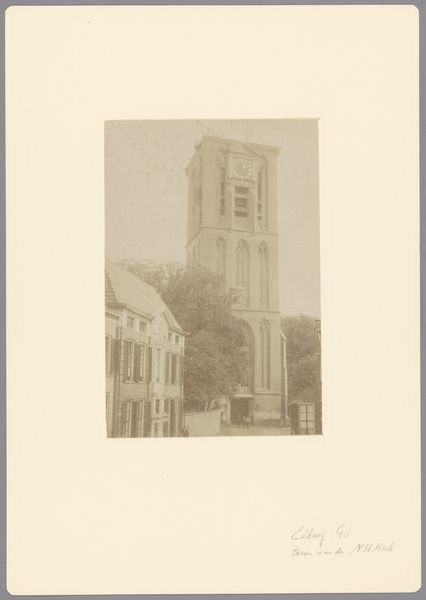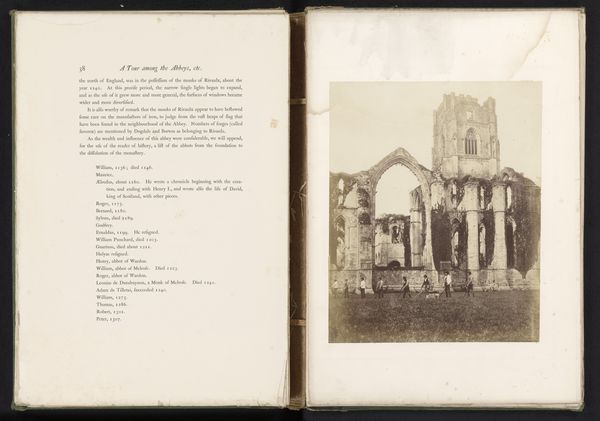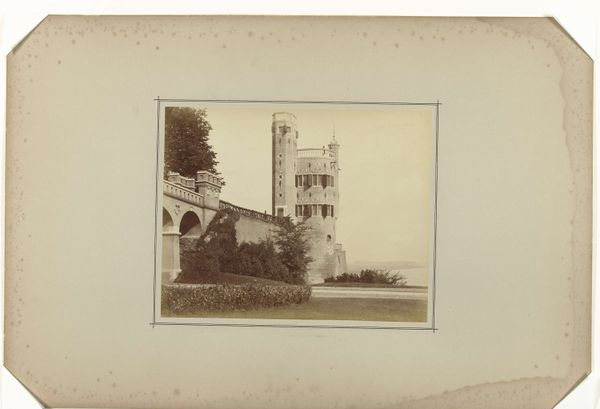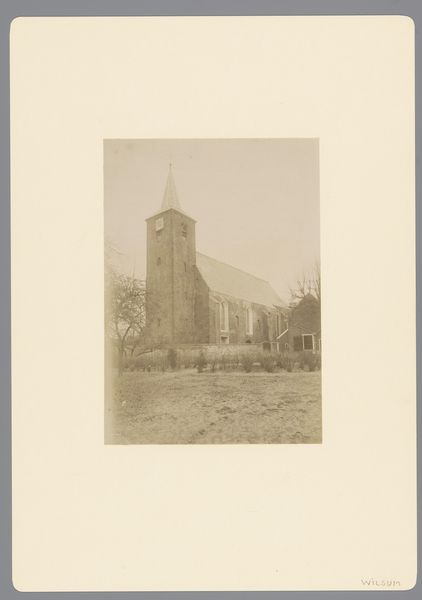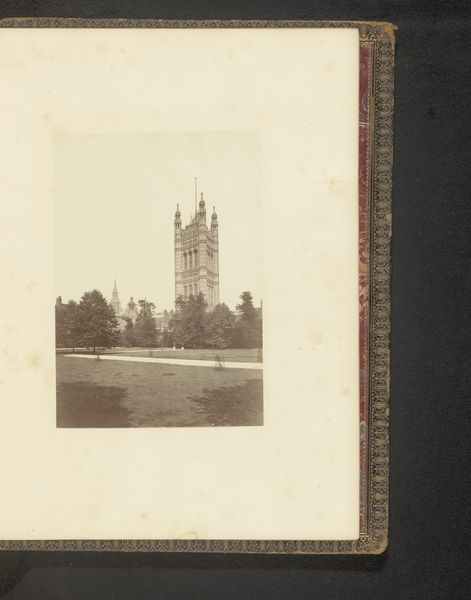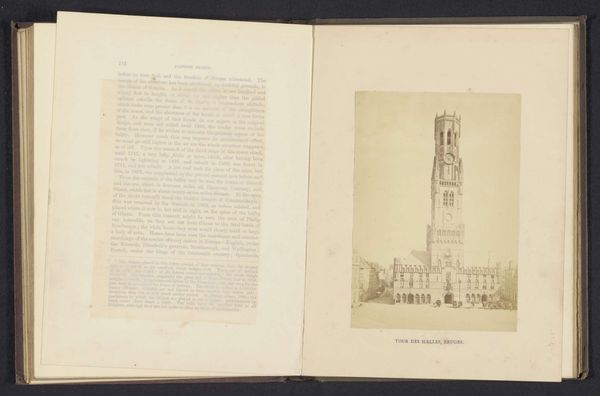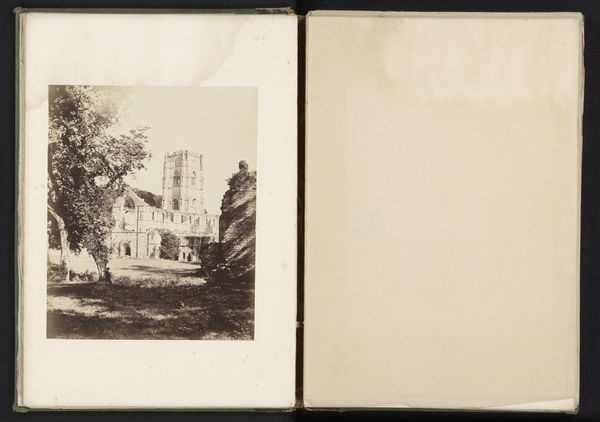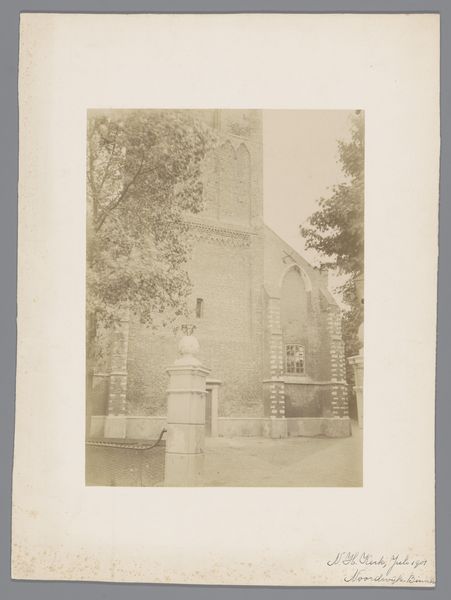
print, photography, site-specific, albumen-print
# print
#
landscape
#
photography
#
coloured pencil
#
site-specific
#
cityscape
#
albumen-print
#
realism
Dimensions: height 195 mm, width 155 mm
Copyright: Rijks Museum: Open Domain
Curator: Looking at this spread from an album, we see a view of St. Andrew's Church in Tarvin, captured by William Bryans before 1858 using the albumen print process. What are your initial thoughts? Editor: Immediately, I’m struck by the church tower’s imposing presence against the muted tones of the print. It feels simultaneously strong and vulnerable, almost like a fading memory. Curator: Indeed. The choice of the albumen print technique offers a specific lens through which we must view this subject matter. There is a relationship to portraiture and ideas of “capturing” or preserving identity during this period that is crucial for contextualizing this landscape scene. Consider the church as a figure, carefully posed for its photograph. Editor: The verticality is assertive; it dominates the frame, seemingly pointing towards the heavens, embodying a link between earthly life and divine presence. What are some architectural elements that symbolize that to you? Curator: Absolutely. In examining the deeper societal context of such a work, we should question the positionality inherent in such "landscape" images of church property. Who commissioned or supported the photograph? What underlying beliefs about land and religious power are naturalized by the aesthetic choices? Thinking about class and privilege opens up further understandings. Editor: That's a great point. Zooming in closer on the architectural aspects of the church I immediately think of several familiar semiotic references, particularly the squared turret topped with crenellations that is quite prominent. As a defensive motif adapted into ecclesiastical architecture, what would it have communicated to its local, 19th-century viewers? Curator: Perhaps a symbolic statement then. What this artwork can communicate to contemporary viewers hinges greatly on decentering ourselves, engaging critically, and imagining ourselves back into an unevenly accessible past. How do you see that tension between temporal and artistic symbol manifesting today? Editor: Well, in encountering this print today, our access to 19th-century Anglican symbols is inherently mediated, filtered through the contemporary lens of deconstruction and cultural criticism. What may have communicated steadfast, virtuous rectitude in one era may now signal systemic imbalance of power. Curator: That critical tension you described is a vital key to unlocking historical materials today. Thank you! Editor: Thank you. It’s always enlightening to juxtapose contemporary interpretations with historical contexts.
Comments
No comments
Be the first to comment and join the conversation on the ultimate creative platform.
